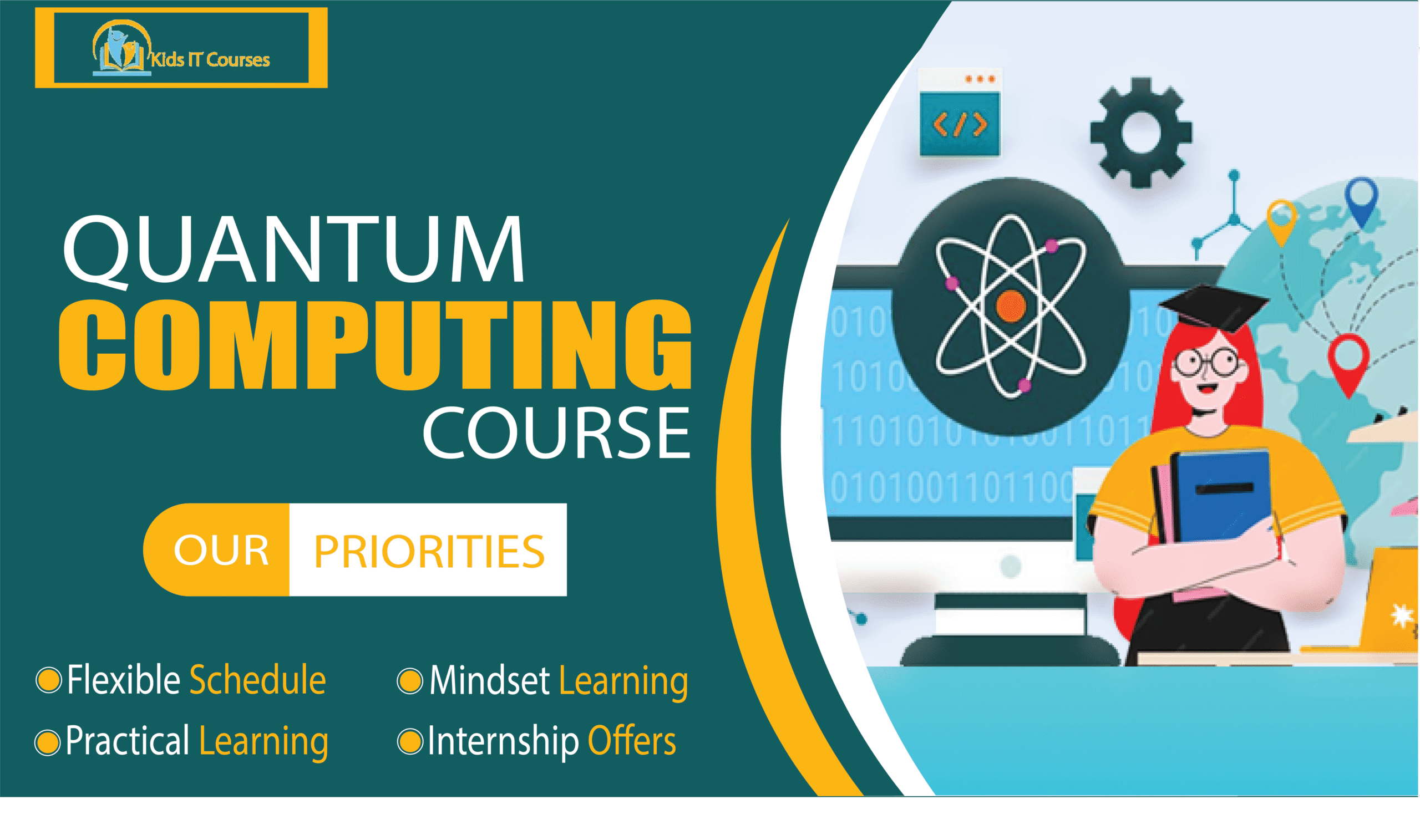
Quantum Computing Course for Kids
Definition
◦ Quantum computing is not like normal computers. Kids learn to think in cool and creative new ways.
◦ They discover how atoms and particles help computers work. It’s like learning computer magic at a tiny level!
◦ Quantum computers solve big problems super fast. Kids learn to solve tricky puzzles in smart ways.
◦ This course gives a fun start to future tech. They learn new words and ideas in a simple way.
◦ Quantum computing is the future of technology. Learning it now gives kids a big advantage.
◦ The course includes simple games and visual stories. It makes learning easy and interesting.
Importance
◦Kids learn how quantum computers work differently than regular ones. It helps them think beyond the usual.
◦ Quantum computing is the future of science and tech. Learning now gives kids a smart early start.
◦ They play with cool ideas like spinning coins and tiny particles. It feels like science magic in a computer world!
◦ The course encourages kids to ask questions and explore. It boosts their imagination and love for science.
◦ They learn how to solve puzzles using quantum ideas. This sharpens their brain and decision-making.
◦ Quantum computing will be part of many future careers. This course builds strong thinking for tomorrow’s world.
Advantages for Quantum Computing
◦ Kids learn to think in new and smart ways. Quantum ideas make their brains sharper and faster.
◦ Quantum computing is the future of science and computers. Kids get to explore it before most people do!
◦The course uses simple games and fun tasks to teach. This makes hard topics easy to enjoy.
◦ It helps kids become curious about space, atoms, and energy. They start loving science in a fun, hands-on way.
◦ Quantum tech is used in space, medicine, and computers. Learning it early gives kids a smart head start.
◦ They learn to solve tricky puzzles using logic and creativity. It trains their brain to think deeply and clearly.
◦ Very few kids know about quantum computing. This course makes them stand out in school and beyond!
Module 1: What is Quantum Computing?
Classical vs quantum computers (basic comparison)
- Real-world examples: Google, NASA, encryption
Why quantum is the future
Meet the Qubit – the quantum version of a bit!
Module 2: Bits vs Qubits
What is a classical bit? (0 or 1)
What is a qubit? (0 and 1 at the same time)
Superposition explained with spinning coins
Simple hands-on activity: Qubit coin toss game
Module 3: Quantum Principles for Beginners
Superposition – a qubit can be in multiple states
Entanglement – spooky link between particles
Measurement – how it changes everything
Use fun metaphors: donuts, twins, and light switches
Module 4: Simple Quantum Algorithms
What is an algorithm?
- Classical vs quantum searching
- Grover’s algorithm (visual explanation only)
- Hands-on: Find hidden item in fewer steps (quantum style!)
Module 5: Visual Coding with Quantum Simulators
Use IBM Quantum Experience or Qiskit blocks
Build a basic quantum circuit
Run a qubit flip simulation
Learn how to read output results
Module 6: Quantum in Real Life
Quantum in medicine and science
Quantum encryption and security
Solving big math and science problems
Jobs of the future: What kids could become
Module 7: Quantum vs Sci-Fi
Quantum myths from movies (Avengers, Ant-Man)
What’s real vs what’s exaggerated
Quantum teleportation — yes, it’s a thing!
Science fiction as a gateway to learning
Module 8: Final Presentation & “Quantum Quest” Game
Kids create a comic, poster, or slideshow on what they learned
Play a quiz-based game: “Quantum Quest”
Present to parents or class
Earn a “Quantum Explorer” certificate
Bonus Materials
Colorful printable with side-by-side comparisons and visual examples
Simple paper or coin game to demonstrate qubit behavior
- Superposition, entanglement, qubit, circuit — explained with cartoons
Creative activity for drawing how qubits “look” in your imagination
Fun and colorful award for completing the course
